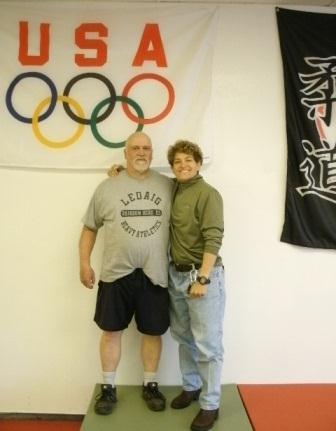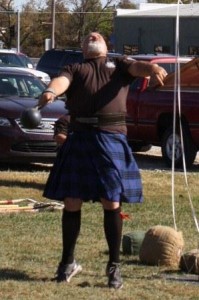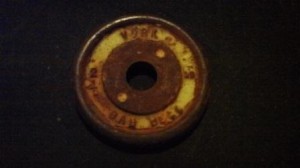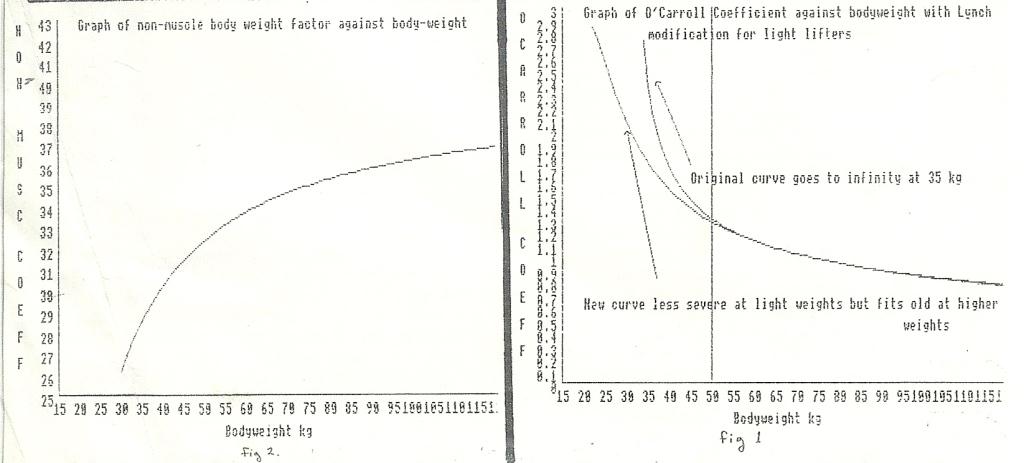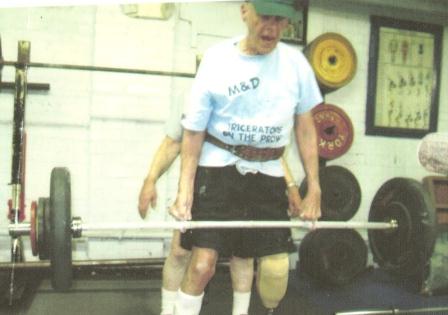Welcome Mat Meet
by Jarrod Fobes
MEET REPORT: 1st Annual Welcome Mat Meet Report
The first of what I hope to be many meets at Colorado Welcome Mat is in the books. The meet was an overall success, thanks in no small part to Mike Murdock whose experience as an official and a competitor was an enormous help. Besides Mike, every competitor was completely new not only to all-around weightlifting, but to weightlifting competitions in general. But don’t think there weren’t some talented athletes competing: Olympian and world SAMBO champion Grace Jividen made a last minute entry despite a persistent elbow injury. Grace set at least two records, and I think it’s safe to say that we will see a lot more of her in the USAWA. In her own words, “I’m hooked!”
The lifts contested were the Turkish Get-up, the Crucifix, and the Dumbbell walk. The TGU and Dumbbell Walk were especially popular with competitors and spectators alike. My friend and training partner Brandon Gurr even hopped in for some unofficial attempts at the Dumbbell Walk, ultimately beating my PR! The real star of the day for this lift though was Mike Cadwallader, who ran 100lbs at a bodyweight of 74kg, which put him in first place at the last minute by a two point spread. As disappointed as I was to see the best lifter award slip away from me, I have to say I was highly impressed. Incidentally, “Dr. Mike” is my chiropractor, and is the main reason that I’m able to even consider competitive weightlifting.
Every lifter who participated in the TGU did well and showed promise to do even better. Dr. Mike put up an impressive TGU at 80lbs, beating the previous best in the USAWA by 10lbs. I was able to set a new PR for myself and for the USAWA at 115lbs. (Don’t tell James Gardner, but I’ve got my eye on his record!) Grace pushed 55lbs, and this was only the second time she had done this lift! Young Frank Policky matched his PR at 45lbs and will only get stronger. Karena fell short of her PR by 5lbs, putting up 45lbs. But I happen to know she is addicted to this lift and I think we can expect more from her in days to come.
The Crucifix was all Mike Murdock, who set a new record at 76lbs. This was the noisiest lift of the day, with pops coming from the elbows, shoulders, and sternums of almost every competitor. This is tough lift that uses a lot of muscles that aren’t used to working together, and I think all of us novice lifters enjoyed trying to figure this one out.
This being a smaller meet, all the lifters helped each other with loading and spotting when necessary. So far as I know this is the first all-around meet held in Colorado, and I was very happy to have six lifters. Several spectators and friends have promised to enter future meets now that the ground as been broken and they have an idea of what USAWA is all about. I really hope we can see this sport grow in Colorado.
MEET RESULTS
Welcome Mat Meet
November 5th, 2011
The Welcome Mat/Gracie Judo Club
Littleton, Colorado
Meet Director: Jarrod Fobes
Certified USAWA Officials (1 official system used): Mike Murdock, Jarrod Fobes
Lifts: Turkish Get Up, Crucifix, Dumbbell Walk
WOMENS DIVISION
| Lifter | Age | BWT | TGU | Cruc | DBW | Total | Points |
| Grace Jividen | 47 | 65.4 | 55 | 36 | 48 | 139 | 164.2 |
| Karena Fobes | 36 | 76.7 | 45 | 36 | 58 | 139 | 137.1 |
MENS DIVISION
| Lifter | Age | BWT | TGU | Cruc | DBW | Total | Points |
| Mike Cadwallader | 34 | 74.3 | 80 | 66 | 100 | 246 | 247.2 |
| Jarrod Fobes | 34 | 84.7 | 115 | 70 | 78 | 263 | 244.4 |
| Frank Policky | 14 | 56.9 | 45 | 22 | 38 | 105 | 152.3 |
| Mike Murdock | 71 | 105.0 | —— | 76 | 63 | 139 | 151.5 |
NOTES: BWT is bodyweight in kilograms. All lifts reported in pounds. Total is total pounds lifted. Points are adjusted for bodyweight and age.
EXTRA ATTEMPTS FOR RECORDS:
Mike Murdock: Rectangular Fix 80#
